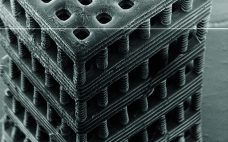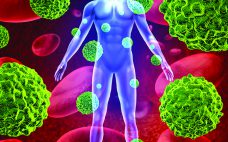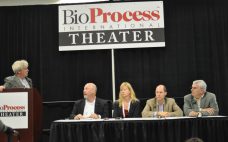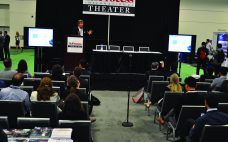The World Stem Cell Summit is the “window to the world” to stem cell research and regenerative medicine. It is the original, translation-focused global meeting of stakeholders, now celebrating its 12th year. With 1,200+ attendees, 225+ speakers and 90+ hours of programming it is no surprise that attendees travel from 30+ countries in order to attend. Learn more at www.worldstemcellsummit.com.
Search Results for: regenerative medicine
Engineering Tissues with Bioprinting
Commonly referred to as three-dimensional (3D) printing, additive manufacturing encompasses a set of technologies that fabricate objects in an additive way, layer by layer, rather than conventional means of fabrications that generally subtract unwanted material from a larger block. Precise control over material placement allows 3D printing to fabricate objects that otherwise would not be manufacturable. Although many of these technologies have been around for two or three decades, recently they have received a significant amount of attention from industry,…
October Supplement From the Editor
Good things come in small packages — like this issue, for example. Each author brings a critical aspect of regenerative medicine development into perspective, highlighting progress and remaining challenges. I am especially pleased to highlight the current stage of gene therapies. At cell therapy conferences a few years ago, some people insisted to me that quality by design (QbD) would have little to no relevance for these advanced therapies. Speakers were academic and medical researchers or commercial manufacturers of traditional…
Progress Toward Commercial Scale and Efficiency in Cell Therapy Bioprocessing
Regenerative medicine includes both cell and gene therapies. Currently 672 regenerative medicine companies operate around the world, and 20 products have been approved by the US Food and Drug Administration (FDA). Of 631 ongoing clinical trials by the end of 2015 (1), over 40% are in oncology, followed in prominence by cardiovascular and infectious diseases. Here I focus on gene and cell therapy bioprocessing in which the final products delivered to patients are cells. Cell therapies are either autologous (derived…
Designing the Optimal Manufacturing Strategy for an Adherent Allogeneic Cell Therapy
Cell therapies (CTs) offer potential treatments for a wide range of medical conditions (1–6) by replacing cells, repairing tissues affected by either disease or damage (7), or delivering genetic or molecular agents that promote self-healing (8). CT research and development is continuously growing (9), with increasing numbers of CT candidates reaching phase 3 clinical trials (9–11). Developers aim to make products that can survive in a competitive landscape while complying with stringent regulatory requirements to control the quality and safety…
CMC Strategy Forum Japan
CASSS’ CMC Strategy Forum Japan will be held 5-6 December 2016 in Tokyo. The Forum will follow the established model of the CMC Forum series with focus on topics and regulatory updates relevant for Japan and Asia and will feature an opening regulatory session that will include presentations from PMDA, FDA and the EMA. Other regulatory agencies that have been invited include China, Korea and Vietnam. The technical sessions will include discussions on regenerative medicine/cell therapy, established conditions in the…
Cell & Gene Therapy Bioprocessing & Commercialization
Accelerate Your Cell and Gene-Based products towards commercial success This is the most comprehensive event that delivers the focused science and business content designed specifically for the cell therapy and regenerative medicine fields, while providing a pivotal gathering place for connecting industry, funding sources, government and academia. Click here to learn more.
Industrialization and Commercialization of Gene and Cell Therapies
A BPI Theater Roundtable at the 2016 BIO Convention On Tuesday, 7 June 2016, Mike Ward (global director of content at Informa) chaired an afternoon roundtable titled, “Challenges Associated with the Industrialization and Commercialization of Gene and Cell Therapies.” He brought together a panel of four experts: Morrie Ruffin (managing director, Alliance for Regenerative Medicine, ARM) Michael Werner (ARM’s executive director) Sarah Haecker Meeks (chief scientific officer, Adjuvant Partners; director of technology sections, ARM) Tom Novak (vice president of strategic…
How to Manufacture and Deliver the Drugs of Tomorrow
Andreas Weiler (global business unit head for emerging technologies, Lonza), BPI Theater @ BIO, June 7, 2016, 11:00–11:20 am How do we know what the future will look like? If we look at preclinical products in the drug development pipeline, we know what is likely to come to the market over the next 5–10 years. We don’t know exactly which products will succeed, but we know the kinds of products that will be available. And a company such as Lonza…
Contract Manufacturing of Cell Therapies: A Conversation with MaSTherCell’s Eric Mathieu and Thibault Jonckheere
The work of developing advanced medical products is spreading around the globe, and with it comes specialized contract services. Far from a “one size fits all” approach to development, and with few platform technologies yet available, contract service providers in the advanced therapeutics space must focus on helping to move promising science into good manufacturing practice (GMP) environments, but with regulatory pathways and eventual harmonization still under development. One company that formed to address the specific needs of cell therapy…







